I’m currently writing an argumentative research paper for my archaeology class about the misinterpretation of the religion of the Aztecs, and I’m going to be dissecting and critiquing my first paragraph.
In the ancient society of the Aztecs, located in the Northern parts of modern day Mexico, religion was a key piece in all facets of daily life. After the Spanish Conquest of the Aztec Empire, Christian friars attempted to convert the native population to Christianity. In the process of converting the native Aztecs, the European colonizers set about dismantling all aspects of the native religion. The dismantling of the Aztec religion and conversion efforts employed by the Europeans led to the misinterpretation of the religion the Aztecs adhered to.
In my intro paragraph my first sentence provided direct background on the topic, and sets up the idea of religion being important in the society. The second sentence then provides historical context of the time period and a factor that led to the collapse of the religious empire, and subsequent misinterpretation of the religion. My thesis asserts that the strategies the Europeans employed to convert the natives directly led to the misinterpretation of the Aztecs’ religion. I’ll have to rework my thesis to focus more on the misinterpretation and find new reasons for it, as so far my paper is more focused on the misinterpretation and not the reasons behind it.
Europeans directly misinterpreted the structure of the religion, and these misinterpretations are still prevalent in the modern world. As Arnold Carlos Vento argues, the Aztecs “did not have a religion as we know religion today”, and the Aztecs had a distinct lack of dogmatic theology. The Aztecs’ religion, for lack of a better word, was guided by planetary cycles, and the holy men that the Europeans categorized as pagan priests were in fact astronomers and sages (Vento). The Aztecs had a “supreme science” known as Ilhuikáyotl, which was a type of ancient cosmology (Vento). The supreme science affirmed the belief of One Supreme Force that cannot be interpreted, the aforementioned Teotl (Vento). In order to express the supreme force, the Aztecs used epithets to express the greatness of the force, with terms such as “the force for whom one lives” and “the force that has everything within it” (Smith). This supreme essence was assisted by “natural representations” and manifestations that “provided life to the planet” (Vento). In contrast to the European systems of belief, the Aztecs did not believe in demons or hells, and instead believed that one was expected to live harmoniously with the supreme essence of life (Vento). The Aztecs did not use religious dogma or follow an imperialist church, and instead their metaphysics, or religion, were based on “thousands of years of scientific observations”, and were intent on discovering higher truths (Vento). Considering the Aztecs’ belief that a supreme force connected planetary patterns and interrelationships between living things, referring to multiple Aztec gods is to “project a medieval Western Christian perception” upon the reality of the Aztecs (Vento).
My first paragraph identifies the misconceptions the Europeans held about the religion, and the projections that formed them. I added lots of context on the religion itself, but I felt it was necessary to fully understand why the Europeans’ conceptions of the religion was so flawed. I also found it interesting to read about the religion and the misconceptions I had about it. The religion the Aztecs followed was unlike any I had ever read about.
In Fitzgerald’s, The Great Gatsby, the main character, Jay Gatsby, has an elusive and undefined nature about him. He claims to be the son of a wealthy family in the Midwest (all of which are dead), and this is how he acquired his fortune.

Gatsby invites Nick Caraway to lunch, and here it becomes evident that he is in some shady business. While at lunch, Meyer Wolfsheim turned to Nick and said, “I understand you’re looking for a business gonnegtion.”. Gatsby quickly answered for Nick, saying Wolfsheim had the wrong man. Instead of questioning this further, Wolfsheim immediately drops the subject and begins to eat. By taking great caution not to openly discuss their “business”, Gatsby and Wolfsheim reveal that their business dealings are secretive and likely illicit.

In addition to learning that Gatsby is likely involved in illegal business, after doing some research Tom Buchanan finds out that Gatsby owns drug stores that sell alcohol discreetly. Tom points this out as the group begins their infamous drive to New York City, stating that if his car runs out of gas he “can stop at a drugstore. You can buy anything at a drugstore nowadays.” This remark from Tom is a subtle dig at Gatsby’s implied involvement in bootlegging.

The final piece of the Gatsby puzzle comes towards the end of the novel, where Gatsby’s father solidifies the truth about his upbringing. Throughout the novel we learn that his parents were “shiftless farms people” and Gatsby, or James Gatz, had always dreamed of a grander life. He had ran away from home at 17 and reinvented himself with a yachter, Dan Cody. He eventually met Daisy before leaving for WWI and losing her to Tom Buchanan. While we know that he tragically doesn’t realize his dream of reconnecting with Daisy and eventually dies, there still seems to be something missing about the analysis of his character. Nick hints to the qualities of Gatsby, and maybe it’s his extraordinary hope that makes it feel like there is something more to Gatsby than what we will ever know.
“Dressed to Kill: Consumption, Style, and the Gangster.” Inventing the Public Enemy: The Gangster in American Culture, 1918-1934. Ruth, David, University of Chicago Press, 1996.
[CONSULTED]
[BOOK CHAPTER]This book chapter from “Dressed to Kill: Consumption, Style, and the Gangster.” Inventing the Public Enemy: The Gangster in American Culture, 1918-1934 by David Ruth shows the correlation between gangsters and the wealth they amass being represented through consumerism. “Along with fashionable attire the gangster acquired other possessions that marked him as an exemplar of consumption. Whether he lived in a traditionally furnished mansion or an ultramodern penthouse, the gangster surrounded himself with a wealth of goods” (Ruth). Ruth highlights the gangster’s use of material wealth as a means of displaying the prominence and success of their gangster activities and the societal implications of consumerism during the gangster era. These focuses can be used to identify the role that criminal activities played in the gangster’s ability to amass wealth, as well as understand the motives and effects of the criminal activity.
_____________
The Bootlegging Business: An Economic Analysis of Organized Crime During Prohibition, Nicole, Leslie, Logan University of Tennessee – Knoxville, Spring 4-1999
[CONSULTED]
[ARTICLE]This article titled The Bootlegging Business: An Economic Analysis of Organized Crime During Prohibition by Leslie Nicole provides insight into bootlegging and the gangster figures of the Prohibition Era, and whether or not they used economic patterns in establishing the lucrative trade of illicit liquor. The analysis argues for and shows a linkage between business practices of the time and criminal activities pursued by organized crime rings as they relate to bootlegging. “The analysis shows a clear linkage between the business patterns prevalent at the time and those activities undertaken by organized criminals”(Nicole). This linkage can be used to identify the extent to which gangsters benefitted from criminal activities as well as understand how these organized crime rings were operated. I can use this linkage to argue that gangsters used economic practices to increase the efficiency of their endeavors and benefit further.
____________
“Gangster City.” Murder Inc., and the Moral Life: Gangsters and Gangbusters in La Guardia’s New York, Fordham University Press, 2016, pp. 54–74.
Whalen, Robert Welden. JSTOR, http://www.jstor.org/stable/j.ctt1ctxqbs.9. Accessed 13 Nov. 2023.
[CONSULTED]
[BOOK CHAPTER] This Chapter “Gangster City” from Robert Whalen’s book Murder Inc., and the Moral Life: Gangsters and Gangbusters in Laguardia’s New York, Whalen explores the motives behind the gangsters’ dealings in illicit activities. As Whalen writes about illicit practices such as gambling, drinking, and prostitution, “Those who disliked the practices were able to make them illegal; those who wanted to enjoy them gladly paid any entrepreneur bold enough to flout the law and provide them. The bold entrepreneurs were the mobsters”. Whalen argues that these mobsters were able to profit off of providing illicit services for citizens of New York. This shows that gangsters directly benefited from the underground economy by providing illegal services. I’ll be able to use this evidence to argue that gangsters benefited from doing illegal activities.
____________
“The Syndicate.” Organized Crime in Chicago: Beyond the Mafia, University of Illinois Press, 2013, pp. 79–100. Lombardo, Robert M.
JSTOR, http://www.jstor.org/stable/10.5406/j.ctt2tt9mc.8. Accessed 13 Nov. 2023.
[CONSULTED]
[BOOK CHAPTER] In chapter 4, “The Syndicate” from Robert Lombardo’s book Organized Crime in Chicago: Beyond the Mafia, Lombardo details gangster Torrio’s plan to organize multiple Chicago gangs into a bootlegging syndicate, with each gang controlling a different territory, theoretically keeping the peace and ensuring each gang stays lucrative. “Realizing there was enough money to be made by all, Torrio approached the leaders of Chicago’s other top gangs and suggested they give up burglary, robbery, and crimes of violence in favor of bootlegging.” This quote shows that gangsters were aware of the lucrative nature of bootlegging and that they were able to organize with one another to maximize profits and keep the operation running smoothly.
____________
“Organized Crime in Urban Society: Chicago in the Twentieth Century.” Journal of Social History, vol. 5, no. 2, 1971, pp. 210–34. Haller, Mark H.
JSTOR, http://www.jstor.org/stable/3786412. Accessed 13 Nov. 2023.
[CONSULTED]
[JOURNAL] This entry Organized Crime in Urban Society: Chicago in the 20th Century, by Mark Haller, explores the role organized crime played in the social and political landscape in Chicago in the early 20th century. “For aspiring politicians, especially during the early years after an ethnic group’s arrival in a city, organized crime was often the most important source of money and manpower. (By the turn of the century an operator of a single policy wheel in Chicago could contribute not only thousands of dollars but also more than a hundred numbers writers to work the neighborhoods on election day ) On occasion, too, criminals supplied strongarm men to act as poll watchers, they organized repeat voters; and they provided other illegal but necessary campaign services.” Here, Haller argues that organized crime rings were able to influence politics through intimidation and unethical voting practices. This shows that organized crime directly impacted the social landscape of cities and played a role in how society interacted with gangsters. I’ll be able to argue that organized crime directly impacted society.
________________
Critchley, D. (2009). “The Origin of Organized Crime in America: The New York City Mafia, 1891–1931.” Routledge.
[BOOK] This book talks about the roots of organized crime in America, examining the socio-economic conditions that led to criminal organizations like the Mafia. It delves into the activities of gangsters and their impact on the economy, giving an analysis of the period leading up to the 1920s. “Both Eastman and Kelly had connections to the New York County Democratic political organization colloquially known as Tammy Hall.” This shows that the criminals of the time period had political connections, benefiting their operations.
_____________
Bergreen, L. (1994). “Capone: The Man and the Era.” Simon & Schuster.
[BOOK]This biography by Laurence Bergreen delves into the life and times of one of the most notorious gangsters of the 1920s, Al Capone. The book provides a detailed account of Capone’s criminal enterprises and also contextualizes them within the historical and economic landscape of the Prohibition era. Bergreen notes Capone’s rise to power, from his early days in Brooklyn to becoming the leader of organized crime in Chicago. The author examines the economic impact of Capone’s activities, particularly his involvement in bootlegging, gambling, and other illicit endeavors. Bergreen also delves into Capone’s influence on local communities and his relationships with politicians and law enforcement. “Every other racketeer knew, the store served another function as the headquarters of corrupt politicians who controlled the first ward.” This quote shows that the store was a hub for corrupt politicians, a recurring theme during the prohibition era. I’ll be able to argue that corruption was rampant.
_____________
Corsino, Louis. “CHICAGO HEIGHTS AND ORGANIZED CRIME.” In The Neighborhood Outfit: Organized Crime in Chicago Heights, 17–41. University of Illinois Press, 2014. http://www.jstor.org/stable/10.5406/j.ctt6wr6fx.5.
[BOOK CHAPTER] This chapter explores the Chicago suburb Chicago Heights, and explains the role of organized crime in the city’s history. “Closely tied to this violence was an illicit “alky” ring that arguably produced and distributed a greater share of illegal alcohol than any place in the country”. Chicago Heights was home to a massive bootlegging operation which I can argue led to economic and political gain for the gangsters of the city.
In Inventing the public enemy, David Ruth argues that the new age of American consumerism ushered in a societal fascination with the gangster. As new production methods were developed, consumerism became a staple of American culture in the 1920’s. As total consumption picked up, to distinguish themselves from competitors, firms had to introduce an element of style to their products to elevate them above competitor’s. Products now had a new importance, in the form perceptions about the owner that they conveyed.
With these new societal implications of possessions, people wanting to show off their glamor could now do so in an obvious, tangible manner. Among these people was the Gangster. Ruth points out that the most obvious aspect of a gangster’s glamor was “his attire”. Recurring symbols of consumption often worn by criminals featured expensive suits, jewels, and expensive cigarette lighters. Journalists of the time “routinely noted” the wealth of these gangsters as a testament to their criminal prowess. A New York times writer noted a gangster’s “new automobile, his tastefully furnished apartment, his diamond stickpin, his two diamond rings, his belt buckle ornamented with seventy-five brilliants, his fifty suits of clothes, his twenty-five pairs of shoes.”, showing the sheer vastness of the economic capital at the gangster’s disposal.
I find it interesting how brazen the gangsters were with their wealth, and they seemingly feared no repercussions from flaunting their wealth. However, it makes sense that the gangster would hide his fear of government intervention as part of his persona. Considering the scale of their criminal industries you’d assume they might be more careful regarding tax laws and obvious laundering. But I suppose the gangsters that were aware and privy to these ideas wouldn’t have been talked about, and wouldn’t have shown off their illicit dealings. It’s interesting comparing Gatsby to these gangsters, because he similarly flaunts his wealth, but it’s a lot less obvious to Nick as to what he is involved in.
The Great Gatsby has been referenced countless times in popular culture. One of the newer references comes from Rod Wave’s new track on his album Nostalgia.

Rod Wave, American rapper and singer, is a young artist that’s been making waves in the hip hop genre, as well as soul-trap. He’s gained notoriety for his emotional voice and is able to relate with people from different walks of life. His songs often focus on themes of love and wealth, and his new song “Great Gatsby” is no exception.
In the chorus of “Great Gatsby” Rod Wave says he “threw the party of the century, and people came over, no one left sober, and it was all for you, it was all for you”. This is a direct allusion to Gatsby’s elaborate parties with lots of alcohol. The intention of this party was to be grand and draw the attention of the subject of his song, a lover he wants to rekindle with. This aligns with Gatsby’s intentions as well and mirrors his sentiment to Daisy.
Rod Wave writes in a later verse that he wants to be with his lover and “close the door, [not] let the world in” and asks his lover if they can “go and hide in again”. This parallels Gatsby’s and Daisy’s own rekindling when they hide from the public in Gatsby’s mansion when they reconnect. They intended to hide their love they same way Rod wants to hide.

It’s interesting to see how The Great Gatsby has endured after nearly 100 years, and is still being referenced in popular culture. The themes of love and wealth are still synonymous with the novel, and modern cultural icons still resonate with the messages.
“Yet it is not, as more recent critics often contend, that Gatsby lays bare an
American Dream sullied by inequality and injustice, a perverted mirror of
its idealistic incarnation. Rather, following Bloch’s parameters, reading the re-presentation of the American Dream in Gatsby as hollow to its core, a core that the novel traces to the origins of Europeans on American soil, actually bolsters the dream’s utopian potential…The dream, in other words, is transposable and its openness to reinterpretation serves as one vector for understanding its ability to seduce.”
Upon first reading this paragraph, the content of the argument was totally lost on me. I didn’t fully understand the point Goldblatt was making, until I had an understanding of the context surrounding the claim. Goldblatt’s paper largely focuses on the post-war popularity of The Great Gatsby, and she dissects the factors that influence the rise in popularity. She claims that “Gatsby was one of the volumes” that was “intended to counter Fascism and Communism abroad and at home”. Looking at the novel through this view creates a new avenue to go about understanding how the American Dream influences the novel.
Goldblatt asserts that recent critics view the American Dream in the novel as a perverted image of the “real” American Dream, seemingly criticizing the idea as a whole. In Goldblatt’s view however, by characterizing the American Dream as hollow in the novel, the utopian aspects of the dream are actually heightened. She argues that through this lens, we can begin to understand the appeal of the novel to a wide audience: it’s “transposable and it’s openness to reinterpretation”.
This idea that the American Dream is widely reinterpretable is particularly appealing to a mass audience. If individuals can find ways to relate to the utopian idea of an American Dream, they can come together to metaphorically defend the Dream itself, regardless of what it means to other people. This accounts for the nationalistic popularity of the novel that Goldblatt points out.
While The Great Gatsby might not give two readers the same takeaways from the novel, the takeaways they do get will likely instill a sense of national pride for the American Dream, despite the two readers’ dreams being entirely different. In this way, The Great Gatsby was able to effectively gain popularity and drum up nationalism due to it’s focus on the American Dream being utopian in nature and easily reinterpreted.
Towards the end of the novel Nick Caraway references an “El Greco” painting, and compares the artwork to West Egg.

He says the village reminds him of a “grotesque” and sullen place, a stark contrast from the grand “mansions” that Nick saw when he first arrived in West Egg. This comparison reflects Nick’s brooding mood that comes over him once the summer has ended and the “foul dust” has preyed upon Gatsby. The events of the book has left the village desolate, symbolizing the finality of Gatsby’s demise.
Another interesting piece of art in the book comes in the form of the book’s cover.

The cover presents a set of eyes looking down upon the city of New York. The eyes symbolize the idea that everything is being watched, an idea that George Wilson uses to justify his killing of Gatsby, “God sees everything”. The eyes also speak to transience, where this omniscient watcher is able to view all of the changes in society over time, but can do nothing but watch. The eyes of T.J. Eckleburg are present throughout the book and watch over the events in the book, the most meaningful being when Gatsby and Daisy drive off after hitting Myrtle Wilson. The eyes can be interpreted as almost melancholy and stoic, simply observing the occurrences of the novel as they happen, with an indiscernible and silent judgement.

Music is also mentioned in the book, with Gatsby’s parties having live bands that play Jazz music deep into the night. The music serves as a tangible aspect of the elaborate parties that shows the high spirits and “hilarity” of the evenings. The music influences the mood of the nights, directly contributing to the perception of Gatsby. Gatsby has built his life up to be seen as grand, and the music at the parties contributes to the feelings of the party goers. They’re inclined to have a joyful time through the music and wish to return to more parties and tell their friends, and Gatsby uses this to his advantage to spread the allure of his company.
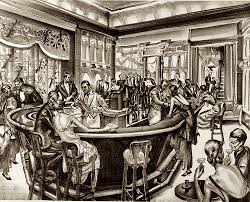
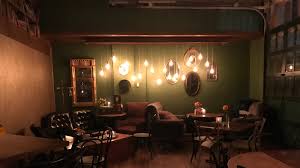
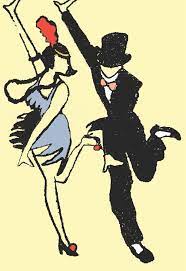
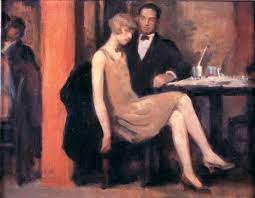
Mystique, Passion, Desire
Lore, extravagance, romanticizing, captivated, unapologetic love,
“getting lost in the glamor,” unique, tendency to romanticize, mythical, larger than life, lost love, love triangle, desire, relatable,
Transitory
thoughtful, point of view, insightful, complex, moving past youth,
young adults,
Lifestyle
“common man”, “ultra-rich”, eloquent, grandeur,
“projecting his desire to have a sort of grand life”
young people transitioning into adulthood, opportunity, life of glamor and elegance, expectations, envisioned,
“Wealth consolidation,”
consumerism, overproduction, American Dream, riches, illicit, poverty,
IMAGES
https://encrypted-tbn0.gstatic.com/images?q=tbn:ANd9GcTM3OrZQfmtVSiK8qBSRNpmcwDZXYAGbrSd1A&usqp=CAU
https://encrypted-tbn0.gstatic.com/images?q=tbn:ANd9GcQSMiDks8Io8Kn6BvHhNUEcetAWGq0wcgsAWQ&usqp=CAU
Despite being nearly 100 years old, F. Scott Fitzgerald’s novel The Great Gatsby is still relevant in popular culture. This is because the themes of the novel such as love and wealth are still prominent in today’s society. A prime example of an allusion to Gatsby in popular culture comes from American singer Brent Faiyaz, in his song titled Ghetto Gatsby.
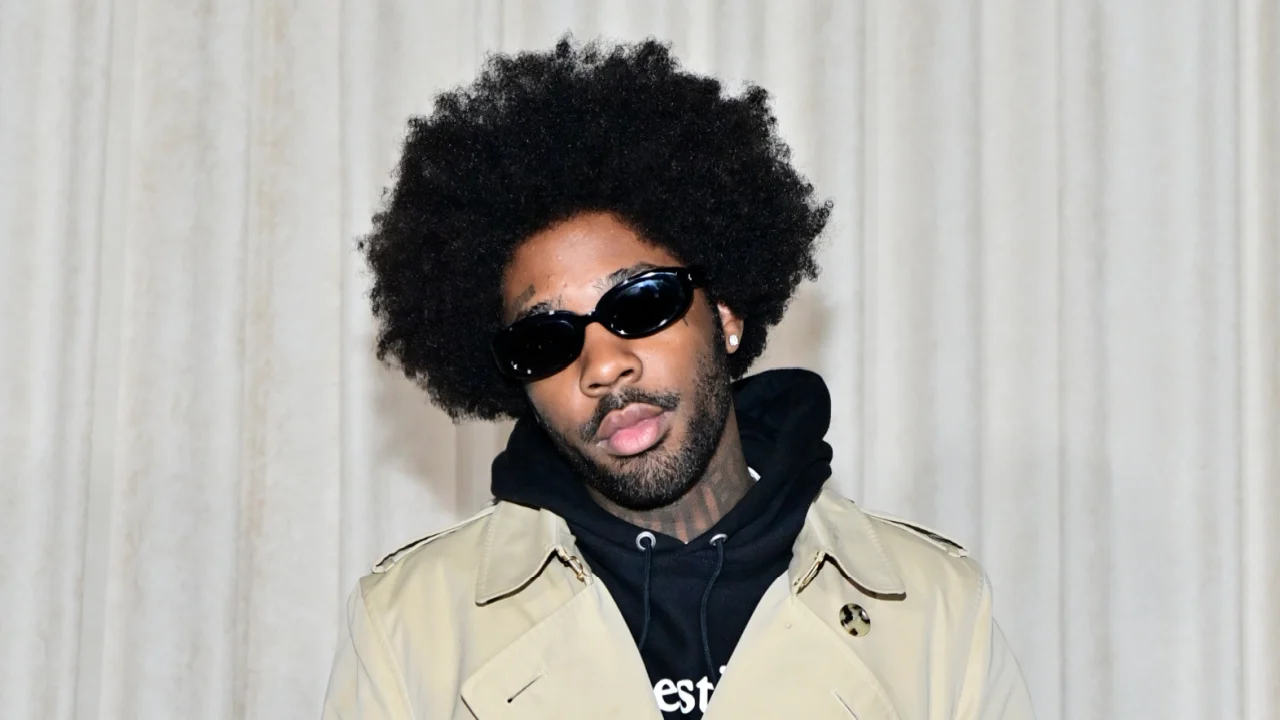
The song’s title Ghetto Gatsby implies that Brent Faiyaz takes some qualities from Gatsby’s persona, such as wealth and status, but puts a “ghetto” spin on it, implying that he doesn’t align himself with the high society aspect of West Egg. The first allusion to Gatsby in the lyrics is the line “Flyer than the wind, I’m Gatsby”, showing that Faiyaz is highly fashionable, paralleling Gatsby’s expensive tastes.

The second allusion to Gatsby comes in the line “Its never enough I just overpaid for a Maybach”. This quote shows that Faiyaz knows he made a poor financial decision but did it anyway, in order to have a fancy car and express his wealth. This is a direct comparison to Gatsby’s Rolls Royce, the Maybach of its day. Like Gatsby, Faiyaz is displaying his wealth in an attempt to show off his wealth. Gatsby was such an influential character that people today still aspire to be like him in terms of wealth and status.

Pictured above is the rapper Gatsby. While he isn’t well known his pseudonym gives insight into how the younger generations perceive Gatsby. By titling himself Gatsby, it’s clear the rapper sees Jay Gatsby as an icon he can aspire to be like.
It’s clear that Gatsby still has a hold on popular culture, and new generations continue to aspire to be like him.
